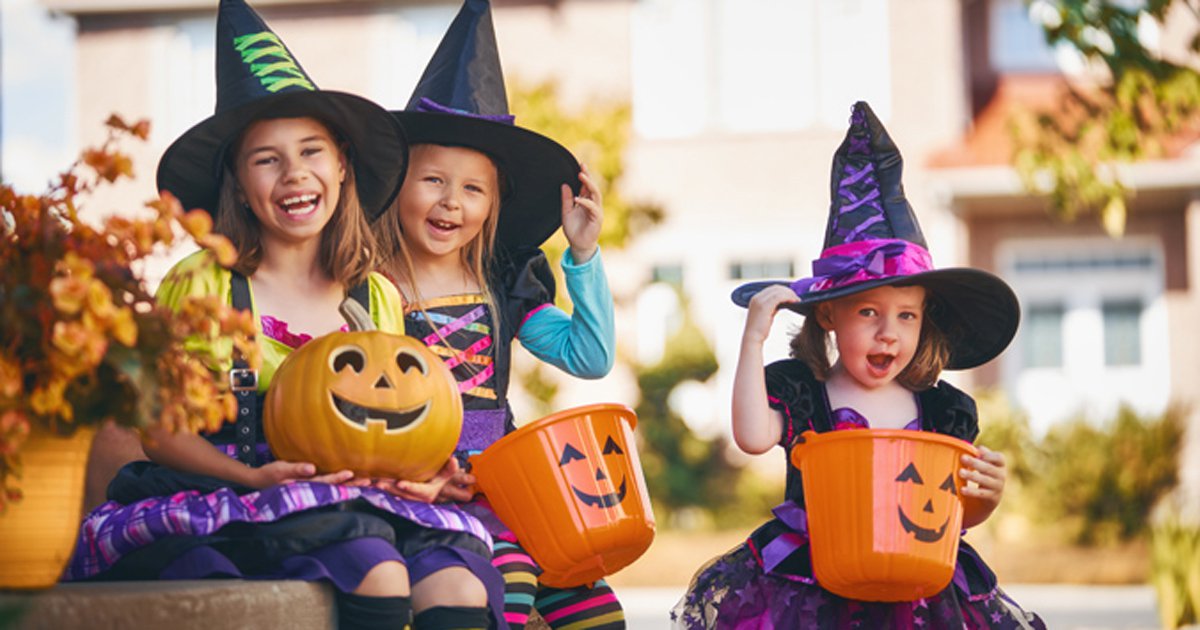Reflective tape and shoes that fit: Pediatricians offer Halloween safety tips

The AAP offered tips on how to keep children safe this Halloween, recommending, among other things, that kids wear reflective tape on their costumes and well-fitting shoes on their feet. The academy advised against letting kids carve their own pumpkins.
“Most people have a tremendous amount of confidence in their pediatricians,” Phyllis Agran, MD, MPH, MA, FAAP, professor emeritus of pediatrics at the University of California, Irvine School of Medicine and a member of the AAP National Executive Committee’s Council on Injury and Violence Prevention, told Infectious Diseases in Children. “We’re the go-to for child health issues. We get questions not only about vaccinations, nutrition and sleep, but we also get a lot of questions about activities. Particularly on Halloween, parents are really concerned about the safety of their children.”
She said parents should be asking questions about how to keep their child safe during seasonal activities like trick-or-treating and pumpkin carving.
“I think it’s really incumbent upon us to have these materials in our office. I make sure I download [information] to hand out to parents,” Agran said. “I think we have to elicit questions, or we have to give them reminders that Halloween is coming up, and these are the things we need to watch for.”

Halloween costumes
According to Agran, the most common Halloween-related injuries are pedestrian accidents.
“I want parents to be aware that children should have reflective costumes, cross at crosswalks and make sure cars can see you,” she said. “By the same token, talk to your friends, neighbors, relatives and your homeowners’ association and have them send out warnings to be alert that children are around because it’s Halloween. They may cross the street.”
She said all parties involved in trick-or-treating — parents supervising their children, unsupervised older children who may be out with friends, and drivers — need to be aware of the hazards associated with Halloween.
To optimize the safety of costumes, the AAP recommended they be brightly colored and reflective. If a costume is neither bright nor reflective, the AAP recommended adding reflective tape or stripes to costumes or trick-or-treat bags.
Nontoxic, hypoallergenic makeup and properly fitted decorative hats also provide a safer alternative to masks, which can limit line of vision, the AAP said.
“Masks, if they’re worn, should have good visibility and not obstruct the child’s vision,” Agran said.
Props such as canes, fake swords or sticks should be kept short and dull to minimize the risk for injury, the AAP warned.
Pumpkin carving
The AAP suggested that pumpkin carving be left to adults. However, is said young children can still be involved in the process by drawing designs on the pumpkin with a marker.
“I would be hesitant to give a child a knife to carve a pumpkin,” Agran said. “That child is at risk for cutting themselves.”
If families prefer to carve pumpkins, she suggested children not handle any knives. Once the pumpkins are carved, families should consider using a flashlight or glow sticks over candles to illuminate them. If candles are preferred, the AAP suggested using votive candles and placing candle-lit pumpkins on a sturdy table rather than a porch, pathway or other area where people may contact them. The pumpkins should be placed away from flammable objects and should always be attended.
Trick-or-treat
As kids travel from house to house, safety should remain at the forefront of parents’ minds. “Trick-or-treating is the fun part, and hopefully kids get a lot of treats and no tricks,” Agran said.
Flashlights can help children navigate safely, and families should avoid houses that are not lit.
If parents are comfortable sending older children out with their friends, certain precautions should be taken. Agran said communication should be maintained between the child and their parents. Parents should also know the route their child will take, what time they are leaving and when they will be returning home.
Healthy Halloween
In addition to monitoring candy and sugar intake, Agran suggested disposing all unwrapped food items. All other candy and food items could be stored away from the child.
“We don’t want stomachaches and consequences of eating too much candy,” she said. “We need to ration it out. I used to throw mini-candy bars in the freezer and hide them so I could be in charge of rationing them out.”
She also suggested that nonfood items, like Halloween-themed pencils and toys, be given out during trick-or-treat as an allergy- and sugar-free alternative.
“Several years ago, I decided I wasn’t going to give candy, so I gave out pencils and information from the AAP. My family thought it was really weird,” Agran said.
“Nowadays, in the AAP guidelines, we’re saying to try for healthier treats and try some noncandy items. I think the norms are changing with the obesity epidemic we’re facing. There can be other safe, nonhazardous objects we can give instead of candy.”
Reference:
Healthychildren.org. Halloween Safety Tips. https://www.healthychildren.org/English/safety-prevention/all-around/Pages/Halloween-Safety-Tips.aspx. Accessed October 30, 2019.
Disclosure: Agran reports no relevant financial disclosures.
